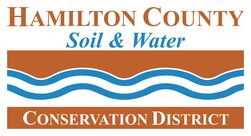See our native/prairie booklet page for more info!
Prepping for your pollinator/native garden
While the most exciting parts of establishing a new pollinator or native garden are likely planting and seeing blooms, site prep and maintenance are the most important in achieving a garden that meets your other expectations. While it is hard to wait to get going on a new planting, ensuring your site is prepped and existing vegetation is eliminated thoroughly will save you trouble in the long run.
Preparation
Eliminating the existing vegetation is likely required for your site, regardless of what you have growing currently.
Every site is different so there is no one way fits all preparation method. See some of our favorites/most used below. Your garden might require a combination of methods.
Other resources:
Prairie Moon Nursery - site prep for seed mix guide
How to Prep your Site for a Native Planting
Preparation
Eliminating the existing vegetation is likely required for your site, regardless of what you have growing currently.
Every site is different so there is no one way fits all preparation method. See some of our favorites/most used below. Your garden might require a combination of methods.
- Smothering with newspaper and mulch - from our friends at Favor Native. Prep in as little as 60 days but over winter is best. Smothering and/or solarization are likely only practical for small areas.
- Solarization with plastic - 6-8 weeks minimum but over a full growing season and/or winter is best.
- Herbicide - a non-selective herbicide (such as Glyphosate) can be used to eliminate most vegetation prior to planting. A second application 10-14 days later may be necessary if there is continued growth. Wait 10-14 days after your final application to plant any seeds or plants. Be very careful to read and follow all label instructions.
- While we typically discourage the use of chemicals including pesticides and herbicides in native gardens, they can have their time and place in preparation and management. A judicious application, following label instructions, of herbicide to help transition an area from a resource intensive, ecologically sterile use (turfgrass) to a low input, beneficial habitat (natives) can be a good trade off.
- Tillage - Repeated tillage of an area of a growing season can eliminate vegetation and leave a smooth planting bed. Tilling should be considered carefully as it does expose weed seeds and encourage them to germinate. Thorough and repeated tillage is likely necessary to make sure the weed seed bank is exhausted before planting. If your site is erosion prone you will need to utilize a cover crop or erosion control measures such as straw or erosion control blanket to protect soils and prevent erosion.
- Sod cutter - You can use a mechanical or manual sod cutter (or even a spade for small areas) to remove turf grass and leave a clean planting bed. You may need/want to lightly till the area after removing sod. We have a kick sod cutter available in our tool loan program for free check out.
Other resources:
Prairie Moon Nursery - site prep for seed mix guide
How to Prep your Site for a Native Planting
